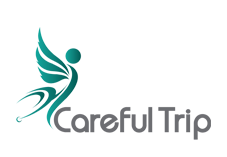
The effects of aging on the face and neck can be reversed with a facelift, also known as a rhytidectomy. This process is frequently chosen by people who struggle with unattractive wrinkles, jowls, and sagging skin in order to help them attain a more youthful, natural look. Before further explanations, it should be mentioned that nowadays facelift in Iran is very common, and due to the significant progress made in recent years in the field of medicine, many people have successfully performed facelift in Iran and are completely satisfied with the results. Further explanations will be provided.
It’s crucial to understand both the surgical process and the postoperative regimen if you’re thinking about getting a facelift. Although it could take a few months before you start seeing the full effects of your facelift, the recovery period is much shorter. Recovery times are difficult to quantify since they vary on a variety of variables, including age, health status, and the type of surgery carried out. Knowing what to anticipate and following your surgeon’s postoperative care instructions, however, will significantly impact the outcomes of your facelift.
For more information, read:
Week 1 of the facelift recovery
You must be careful to take care of the surgical incisions at this time and keep them clean to avoid infection.
Day 1 after the facelift
You can feel wobbly and tired following surgery. You ought to have organized transportation and care for you on your first night at home from relatives and friends. You normally need pain medication to control discomfort the most on the first day.
Day 2 after the facelift
Around this time, if you performed a facelift in Iran or other places, your surgeon will arrange for a follow-up appointment. While removing or changing your surgical bandages, they will examine your wounds and any edema. If everything appears to be in order, the surgeon will redress the area, go over postoperative instructions once more, and then release you.
Day 3 after the facelift
Today is best spent sleeping, although you should start to feel better and want to get up and move around. Swelling and bruising frequently reach their heights between days 3 and 4, but both are likely to persist for a few more weeks. Continue taking your medication if you are in pain.
Days 4-6 after the facelift
By this time, the majority of people no longer require prescription painkillers. The swelling ought to start to lessen. You should also start to feel more at ease moving around. It’s frequently acceptable to perform some light housekeeping if you feel well enough.
Week 2-4 of facelift recovery
As you know, due to the popularity of a facelift in Iran and other parts of the world, all medical teams are looking to provide the best services to their clients. Iran is one of the nations that has seen an increase in tourists in recent years from all over the world as a result of its notable advancements in the medical industry.
So, you can safely apply for a facelift in Iran. Also, by choosing the CarefulTrip team, foreign visitors can leave all the stages of their medical tourist trip to us, such as getting a visa, arranging hotels and accommodations, arranging surgeon appointments and surgery, etc.
Week 2 of facelift recovery
Days 7-14. You’ll probably still have some swelling and bruising around the injured areas this week. Some additional typical adverse effects of swelling and bruising include stiffness, tingling, and numbness. All of these are common side effects of a facelift and shouldn’t cause concern. Many patients are ready to go back to work and start doing modest activities like walking at the end of the second week following surgery since they are feeling like themselves again.
For more information, read:
Weeks 3 and 4 of facelift recovery
Days 15-30. Depending on your specific treatment and your recovery progress, your sutures may be removed anywhere from the end of week one to week three. At weeks 3 and 4, you could still feel tight and swollen, but overall, you should start to look and feel a lot better. by doing a facelift in Iran or anywhere else Patients frequently start to see noticeable changes in their facial contour at this point. By this time, there should be little to no visible aftereffects of the procedure, so you can resume exercising and engaging in other activities. The pinkish-red color at the location of the incision should disappear over time.
How should you care for yourself at home?
You should know that the numbness may not go away for several months and that the average recovery time is 4 to 6 weeks. However, it may take up to 6 months to notice the full effects of the procedure. Remember these things to spend your recovery time better.
- If you’re doing a facelift in Iran or other nations observe the showering instructions provided by your doctor. A day or two following surgery, you might be able to take a shower.
- After surgery, keep your head elevated for a few days. Use two or three pillows to elevate your head as you sleep.
- For around three weeks, or until your doctor gives the all-clear, refrain from engaging in intense activities like bicycling, jogging, lifting weights, or aerobic activity.
- If you have problems opening your mouth, use a baby toothbrush to brush your teeth.
- Because you won’t be able to feel the blade on your skin when shaving after a facelift, proceed with extreme caution. For a few months, switching to an electric razor may be helpful to get the feeling back in your face and neck’s skin.
- For the first few days following surgery, consume soft meals. Try mashed potatoes, soup, juice, pudding, yogurt, applesauce, and pudding.
- by having a facelift in Iran with CarefulTrip if and when you can resume taking your medications will be determined by your doctor. You’ll receive instructions from your doctor on how to take any new medications as well.
- Taking medication after a meal (unless your doctor has told you not to).
- If you have tape strips covering the incision (cut) the doctor made, keep them there for a week or until they come off naturally. Or you can remove the tape by following your doctor’s recommendations.
- Unless your doctor instructs you to do so, avoid applying lotions or ointments to your incisions.
Skin care tips after a facelift
Although the recovery period following a facelift might vary from patient to patient, there are aftercare techniques that can shorten the period. You can lower the risk of complications by heeding this advice in addition to your surgeon’s prescriptions.
Moisturizing and cleaning after a facelift
In the 24 hours following a facelift, rest is crucial. Mild bleeding under the bandage on your face is typical. To prevent bacteria and infections, wash these incisions with soap and water three times every day. After that, moisturize to prevent dry skin and scarring. The incisions and your skin shouldn’t feel dry. You can maintain a clean, well-groomed face by cleansing and moisturizing.
Wearing makeup after a facelift
Following cosmetic surgery like a facelift in Iran or other countries, many patients want to resume their normal beauty routine or disguise the swelling with makeup. Give yourself up to a week to heal from your facelift before applying makeup. For a more natural appearance, mineral makeup is also a lighter alternative choice than heavy liquid solutions.
Avoiding sunshine after a facelift
After a facelift, direct sun exposure might damage your skin. After surgery, you shouldn’t expose your incisions to direct sunlight for at least six months. SPF 30 offers exactly the right amount of protection without blocking your pores, which must stay open.
Reduce swelling and bleeding after facelift
After a facelift, swelling and bruising frequently worsen before they start to recover. The worst of it typically happens in the first few days following surgery. Apply ice to the area to prevent discoloration and help minimize swelling and bruising.
Minimize scarring after facelift
Never pick at or disrupt scabs or skin that is peeling. This can result in an infection and increase the risk of scarring. Six weeks following surgery, apply Mederma scar gel, cocoa butter, or vitamin E as an alternative. Apply the ointment to your scar using gentle, circular motions.
After doing a facelift in Iran or anywhere else, a crucial component of your treatment and security is follow-up care. Make sure you schedule and keep all appointments, and if you experience any difficulties, call your doctor or nurse advice line. Keeping track of the prescriptions you take and being aware of the outcomes of your tests are also sensible choices.
For more information, read:
Conclusion
In this blog, all the necessary information and tips related to recovery after facelift surgery have been presented. Also, after reading this blog, you can safely proceed with a facelift in Iran along with CarefulTrip. CarefulTrip is the top health and medical tourism destination in Iran, where each patient receives the best possible care. a qualified group of doctors and specialists who prioritize the health of their patients. now with no hesitation proceed for a facelift in Iran to receive the best results.
For more information, read:

